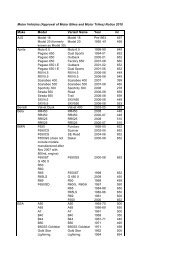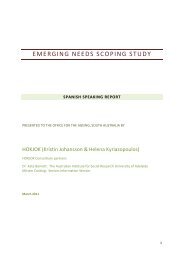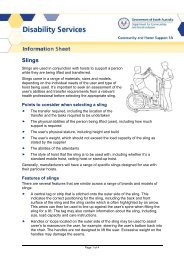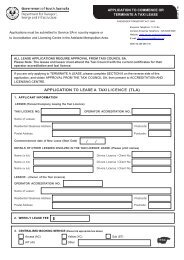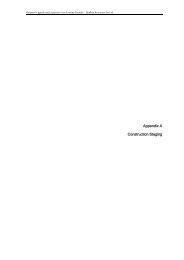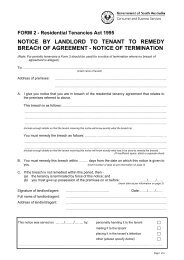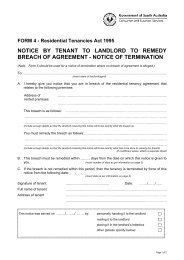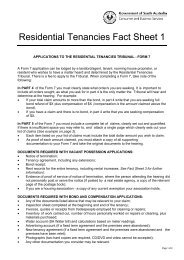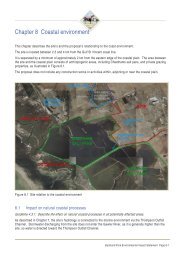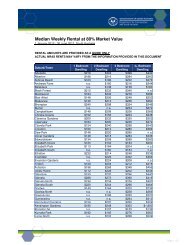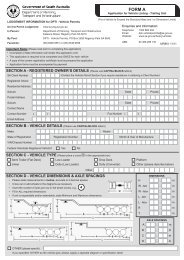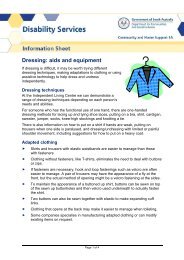Affordable homes design guidelines.pdf - sa.gov.au
Affordable homes design guidelines.pdf - sa.gov.au
Affordable homes design guidelines.pdf - sa.gov.au
You also want an ePaper? Increase the reach of your titles
YUMPU automatically turns print PDFs into web optimized ePapers that Google loves.
PRINCIPLES OF GOOD DESIGN<br />
The planning of affordable housing requires a holistic approach, linking urban <strong>design</strong>, built form and<br />
construction techniques. While masterplanning and lot sizes can indirectly provide a diversity of land sizes and<br />
costs, investment in good <strong>design</strong> and innovative built forms when used together with construction techniques<br />
can directly reduce costs. It is important to always consider new technologies, new and increasing quality<br />
building materials, and other efficiencies in construction where possible alongside <strong>design</strong> initiatives as discussed<br />
in this guide.<br />
Objectives<br />
• To provide WELL LOCATED affordable housing that has access to services and facilities, employment and<br />
education, preventing concentrations of low-moderate income earners in di<strong>sa</strong>dvantaged locations;<br />
• To consider LONG-TERM AFFORDABILITY of housing and incorporate environmentally sustainable <strong>design</strong><br />
techniques;<br />
• To provide ADAPTABLE HOUSING to suit changing life cycle consumer demands;<br />
• To offer a diverse CHOICE OF HOUSING FORMS to suit contemporary families;<br />
• To establish SAFE AND COMMUNITY-MINDED neighbourhoods; and<br />
• To provide affordable housing that is WELL INTEGRATED into the neighbourhood and the streetscape.<br />
Broad Principles<br />
Sustainable housing<br />
<strong>Affordable</strong> housing <strong>design</strong>s need to consider the long-term costs in addition to the up-front costs of buying a<br />
house. Long-term costs can be reduced through building a house that has environmentally sustainable <strong>design</strong><br />
(ESD) techniques in place. ESD can reduce the demand for resources such as electricity and water, helping<br />
residents to <strong>sa</strong>ve money on their living expenses.<br />
Principles that should be considered include –<br />
• INSULATION to minimise heat transfer through the dwelling;<br />
• NORTHERN ASPECT of living rooms and open spaces;<br />
• ALLOWING SOLAR PENETRATION of the winter sun; and<br />
• BLOCKING SOLAR PENETRATION of the summer sun through correctly placed eaves;<br />
• ISOLATION of rooms for heating purposes to conserve energy;<br />
• SELECTION OF VEGETATION for the climate;<br />
• RAINWATER TANKS installed and connected to the toilet for flushing; and<br />
• MAXIMISING PENETRATION OF RAINWATER through porous surfaces.<br />
For further information refer to Housing SA Design Guidelines.




